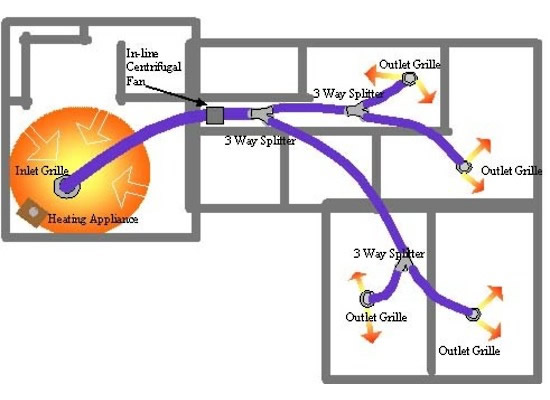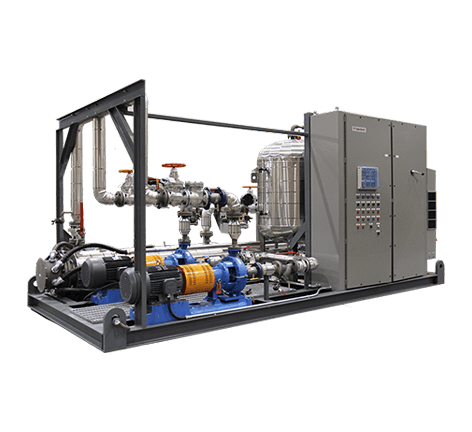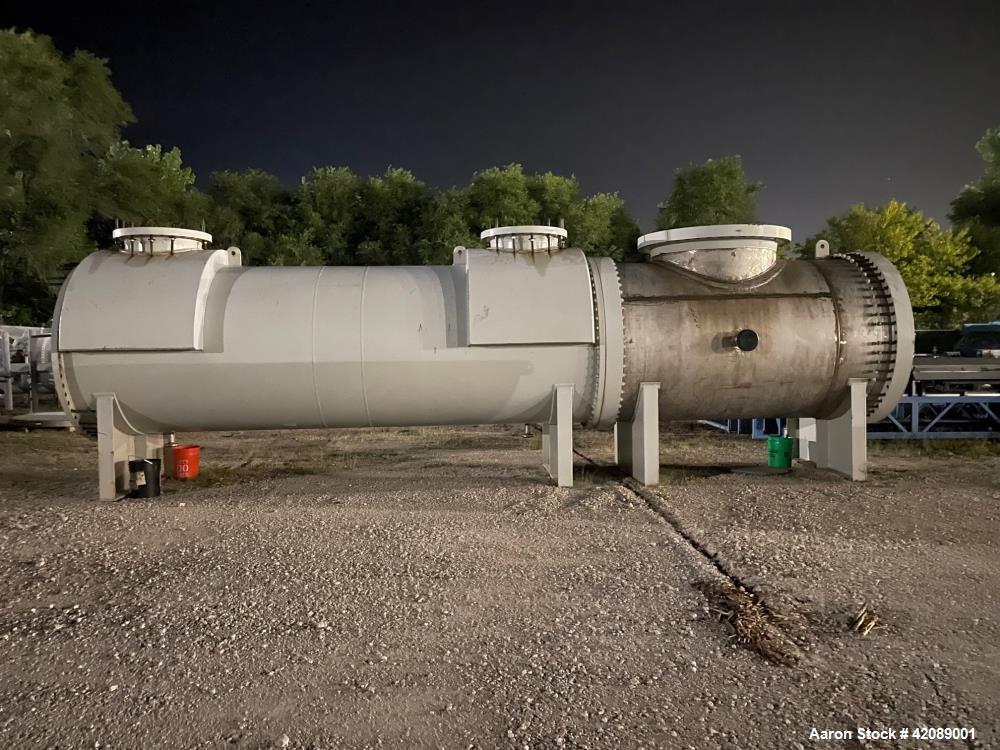Why Choose DVS Heat Transfer Systems for Compact Heat Exchanger Designs
The Function of Heat Transfer Systems in Sustainable Energy Solutions for the Future
Heat transfer systems are essential in the pursuit for lasting power options. They enhance thermal energy monitoring, boosting the effectiveness of renewable modern technologies. By utilizing devices like convection, conduction, and radiation, these systems lessen power losses. Their function in solar thermal and geothermal applications is especially considerable. As developments emerge, the possibility for additional developments raises important inquiries concerning future power strategies. What developments will shape the landscape of lasting energy?
Recognizing Heat Transfer Equipments

The Significance of Thermal Energy Management
Efficient thermal power management is essential for making the most of power efficiency and lessening waste in various systems. By controling temperature level and optimizing Heat transfer procedures, organizations can substantially reduce power consumption and functional costs. Efficient management involves the execution of advanced technologies and methods that check and manage thermal problems within systems, making sure that power sources are utilized efficiently. Additionally, appropriate thermal energy administration adds to reducing greenhouse gas emissions, aligning with global sustainability goals. It likewise improves system dependability and performance, resulting in enhanced product quality and longer devices lifespan. Eventually, focusing on thermal energy monitoring is a vital step in the direction of producing more sustainable power remedies and cultivating an accountable strategy to energy usage in household and commercial contexts.
Applications of Heat Transfer in Renewable Energy
While various renewable resource sources assure sustainability, the effective application of Heat transfer plays a necessary duty in their efficiency. In wind energy systems, Heat transfer is utilized for turbine part cooling, boosting efficiency and durability. Geothermal energy depends on reliable Heat exchange between the planet's subsurface and the liquid flowing in the system, making the most of power removal. Biomass power processes likewise benefit from Heat transfer, as it assists in transforming organic materials into useful fuel via pyrolysis and gasification. Furthermore, in hydropower, maintaining ideal temperature levels in tanks can boost energy output. Each of these applications shows the vital significance of Heat transfer systems in enhancing renewable resource technologies, eventually adding to a much more sustainable power future.
Enhancing Solar Thermal Power Performance
As solar thermal power systems continue to progress, enhancing their efficiency has actually become crucial for making best use of energy output. Advances in Heat transfer modern technologies, such as improved thermal storage materials and innovative Heat exchangers, play a substantial role in improving performance. By using innovative materials that have remarkable thermal conductivity, systems can move and record Heat a lot more properly. Additionally, integrating radar that adhere to the sun's path assurances that enthusiasts obtain optimal solar direct exposure throughout the day. Making use of nanotechnology in solar absorbers can even more enhance power absorption prices. Integrating automatic control systems assists manage and manage temperature levels energy distribution successfully, leading to lowered losses and boosted total system performance. These improvements lead the way for more sustainable solar thermal energy services in the future.
Geothermal Heating: A Sustainable Solution
Geothermal heating provides a feasible choice for sustainable energy, offering substantial ecological benefits through minimized greenhouse gas discharges. Its efficiency and cost-effectiveness make it an attractive option to conventional furnace. Obstacles connected to application has to be resolved to maximize its possible effect.
Environmental Advantages of Geothermal
Although conventional home heating methods add considerably to greenhouse gas discharges, geothermal heating offers a compelling choice that reduces environmental effect. By taking advantage of the Planet's inner Heat, geothermal systems utilize a sustainable power resource, markedly decreasing reliance on nonrenewable fuel sources. This approach produces marginal carbon emissions, making it a cleaner option for property and business heating. In addition, geothermal systems advertise power efficiency, as they require less energy compared to conventional heater. DVS Heat Transfer Systems. The use of geothermal power also helps in lowering air contamination, enhancing local air high quality and public health and wellness. As a sustainable service, geothermal heating supports climate change reduction efforts, positioning itself as a crucial part in the change in the direction of a greener future
Performance and Cost-Effectiveness
Exactly how does geothermal home heating determine up in terms of efficiency and cost-effectiveness compared to typical heating unit? Geothermal heating demonstrates remarkable effectiveness, usually achieving a coefficient of efficiency (COP) of 3 to 5, meaning it produces three to five systems of Heat for every device of power taken in. This effectiveness translates into reduced operating costs, specifically in areas with secure geothermal sources. First installment costs can be more than standard systems; nevertheless, lasting cost savings on energy costs and decreased maintenance expenditures can balance out these upfront financial investments. Furthermore, numerous federal governments incentivize geothermal systems with rebates and tax obligation credit reports, boosting their cost-effectiveness. On the whole, geothermal heating becomes a sustainable and financially sensible choice to more standard heating remedies.
Application Difficulties and Solutions
Numerous challenges can hamper the widespread application of geothermal furnace, regardless of their clear advantages as a lasting power option. High first installment prices commonly discourage capitalists and homeowners, making funding a considerable obstacle. Furthermore, the geographical constraints of appropriate geothermal sites limit accessibility in particular areas. Local guidelines and allowing procedures can also make complex project development, leading to hold-ups. Public awareness and understanding of geothermal systems continue to be reduced, impeding acceptance. To deal with these difficulties, targeted education projects can boost open secret, while government incentives could minimize economic worries. Collaborating with local authorities to streamline regulations may promote smoother task approvals, ultimately promoting the adoption of geothermal home heating as a viable, sustainable energy option.
Developments in Heat Transfer Technologies
Innovations in Heat transfer modern technologies play a vital role in enhancing energy efficiency and sustainability. Advanced Heat exchangers and stage modification materials are at the forefront of these developments, providing significant improvements in thermal monitoring. These modern technologies not just enhance energy use however likewise add to decreasing environmental influence in numerous applications.
Advanced Heat Exchangers
Advanced Heat exchangers play a necessary duty in boosting energy efficiency throughout various applications in lasting energy solutions. These devices assist in the transfer of Heat between two or even more fluids, considerably reducing energy consumption in procedures such as industrial home heating, air conditioning, and power generation. Developments in products and design, such as the usage of nanofluids and small setups, have brought about enhanced thermal performance and decreased dimension requirements. Furthermore, developments in electronic monitoring and control systems enable for optimized operation, more raising effectiveness. By minimizing waste Heat and making best use of energy recuperation, advanced Heat exchangers contribute to lower carbon Extra resources footprints and sustain the change toward eco-friendly innovations. Their continued growth is vital for accomplishing international power sustainability goals.
Phase Adjustment Materials
The integration of phase adjustment products (PCMs) right into Heat transfer technologies stands for a substantial advancement in energy administration and effectiveness. PCMs soak up and release thermal power throughout their stage modifications, making it possible for effective temperature guideline in structure materials and energy systems. By storing excess Heat throughout peak periods and releasing it when need increases, PCMs add to load shifting and power conservation - DVS Heat Transfer Systems. This capability enhances the performance of renewable power systems, specifically in solar thermal applications. Additionally, PCMs can boost the thermal comfort of interior settings, minimizing dependence on conventional home heating and cooling down approaches. As innovations in PCM solutions proceed to emerge, their function in lasting energy services is poised to expand, supplying encouraging methods for future study and application

Future Prospects for Heat Transfer in Lasting Power
As the demand for sustainable energy services remains to increase, the duty of Heat transfer systems is coming to be increasingly essential fit future technologies. Advancements in designs and materials are expected to enhance efficiency in Heat transfer, lowering power losses in numerous applications. The assimilation of advanced thermal storage space systems, such as stage change products and thermochemical storage space, web link will enable far better monitoring of power sources. Study right into nanofluids and biomimetic Heat exchangers might additionally enhance thermal performance. In addition, the fostering of smart innovations will certainly permit real-time tracking and flexible control of Heat transfer processes. These developments are poised to greatly contribute to the overall performance and sustainability of power systems, leading the way for a much more energy-efficient future.
Frequently Asked Concerns
Exactly How Can Individuals Execute Heat Transfer Solution in your home?

People can implement Heat transfer systems at home by mounting energy-efficient home appliances, using radiant heat, and enhancing insulation. These measures boost power effectiveness, reduce prices, and promote lasting methods in household environments.

What Are the Prices Connected With Installing Heat Transfer Solutions?
The prices related to setting up Heat transfer systems vary widely, normally including tools, installment labor, and maintenance. Variables such as system kind, home size, and regional guidelines significantly influence the general expenditure included.
Exist Government Incentives for Heat Transfer System Installations?
Federal government incentives navigate to these guys for Heat transfer system installations vary by area and can consist of tax obligation grants, discounts, and credit reports. These monetary benefits intend to encourage fostering, ultimately advertising energy efficiency and minimizing environmental influence within neighborhoods.
How Do Heat Transfer Equipments Effect Power Expenses?
Heat transfer systems significantly influence power bills by maximizing energy performance. By boosting the transfer of Heat, these systems decrease power consumption, causing reduced utility expenses and developing a much more lasting technique to energy administration.
What Maintenance Is Required for Heat Transfer Systems?
Upkeep for Heat transfer systems includes normal inspections, cleansing of parts, checking liquid degrees, guaranteeing correct insulation, and replacing used parts. These jobs aid preserve performance, prevent malfunctions, and prolong the system's operational life-span.
These systems help with the activity of thermal power from one medium to one more, allowing the transfer of Heat for heating, energy, or air conditioning generation objectives. Geothermal power relies on reliable Heat exchange in between the earth's subsurface and the fluid distributing in the system, optimizing power removal. Additionally, geothermal systems promote power efficiency, as they require much less energy compared to traditional heating systems. Advanced Heat exchangers play a necessary duty in boosting power effectiveness throughout numerous applications in lasting power options. Heat transfer systems significantly affect power expenses by optimizing power performance.